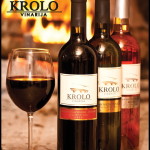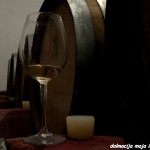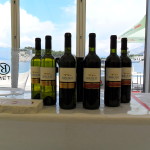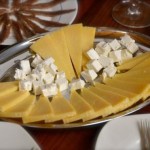About
Posts by :

Prvi Poljubac – Memories of a First Kiss
Prvi Poljubac – Memories of a First Kiss
While in Dalmatia, especially on the islands, you will run into a dessert wine called Prošek. For a while its brand had been compromised by poor legislation that allowed certain companies to produce “sugar water” and call it Prošek. On the flip side Italy and the EU now have a bright idea of banning the name “Prošek”. Excellent, there is no such thing as bad publicity.
So anyway, Prošek is supposed to be a very sweet desert wine made from grape varietals such as Maraština, Bogdanuša, Prč, and Kuč. Grapes are picked then put on mats and dried in the hot Dalmatian sun (it can get silly hot sometimes). A little bit of squeezing the syrup and fun with fermentation and we have a winner.
Prošek, when done right, is a high alcohol, high sugar content miracle that you should try even if you are not a fan of the sweets (like me).
Prvi Poljubac (The First Kiss) is a half-bottle sized orgasm. Sorry blogging puritans, ill wash down my keyboard with holy water later. But it’s true, this Prošek, produced by Ivo Duboković, is loaded with aromas of caramel, coffee, dried apricots….list goes on and on…funny story, once after a bottle of Prvi Poljubac I went to a rock concert and drank a lot of hard stuff you usually drink there (hint: bikers are not fans of Beaujolais), got hammered, then woke up next morning still feeling only the aromas of Prvi Poljubac, nicest hangover ever….
Anyhow, Ivo has a gem and people better take notice. Try to book a tasting at his winery, or find a specialty shop and find this; take it home, open it on your anniversary by the fire and then you can thank me.
You’re welcome.

Medvid & Medvjedica – garage wines on steroids
Medvid & Medvjedica – garage wines on steroids
You have heard about French garage winemakers. Aura of mystique and unavailability surrounds the stories of strange people hanging around their small cellars acting more like crystal meth producers than winemakers. Ok, maybe not meth producers, but let’s say Bill Gates circa 1974.
Croatia of course has a version of its own. Professor Ivo Duboković and his late father Jakov built a true wine paradise just across the street from the biggest (bankrupted) wine cooperative.
Ivo isn’t a winemaking or viticulture professor, he’s a marketing professor and that alone should turn on the red light for those who are aware of power of branding in the wine industry.
But fortunately for us wine lovers his juice tells another story. Especially the reds, oh the reds…my mouth is watering already…focus, focus, focus…ok, I’m back…
His top line of red wine, made out of grapes from the southern slopes of Hvar, on “appellation” called Medvid Bod, is something to behold.
I call them The Balrogs of Jelsa….nerd alert, Balrogs are scary looking things from Tolkien’s First Age, you know, that guy that almost kicked Gandalf’s ass…
What’s the connection? Hmm, hidden underground, powerful, able to stop in the track anybody who can fully grasp their strength…ok, enough with the geek talk…
Medvjedica is actually a name of a endangered Mediterranean seal who once enjoyed life in a cave just beneath the vineyard itself, Medvid is supposed to be a male version, for those not versed into Croatian language gymnastics.
Medvid & Medvjedica are made from Plavac Mali grapes and their main difference is oak influence. Medvid has seen some new oak, and his female counterpart soaked in some used oak.
Both wines are extremely juicy and delicious, not made for food in my opinion, you open this as a dessert and enjoy a glass with couple of special people. Please take note that it’s a dry red wine, I just think of it as dessert because I’m not a fan of sugar, and even if I was, this would win.
Look for 2008, 2009 and eventually 2011 vintage when it gets released.

Croatian Wine Cheat Sheet
Croatian Wine Cheat Sheet – 101 on what to look out for while drinking in Croatia
Remember book reports? Yikes, didn’t like those, so I often opted out to cut the whole process short and go play my guitar. Discovering cliff notes and cheat sheets has been one of the most important events in my life. It cleared time for reading about and doing things I actually care about. Wine is one of them, but not for everybody, people are different, and I wouldn’t take it any other way.
So, you are on vacation, want to have a nice bottle of wine but don’t want to go through the nerd stages of figuring out every single thing about something obscure as Croatian winemaking.
Good, here is a strip down of Croatian wine stuff, as simple as it can be, maybe even simpler that it should be. Regions, varietals, producers.
Dalmatia is probably place where you will end up in anyway; places like Dubrovnik, Hvar and Split are exploding as world class destinations
- Plavac Mali is the predominant red grape in Dalmatia, it’s high in alcohol and tannin, be sure to pair it with hearty dishes or you could be overwhelmed , also ask the waiters if they could recommend some Plavac from known appellations (Dingač, Postup, Ivan Dolac) because Plavac can give suspicious results when out of it comfort zone. Target Duboković, Baković, Miloš, Radović (Dingač) and Grgić.
- Zinfandel aka Crljenak aka Pribidrag as a father of Plavac Mali is now living through a second youth and can surprise with quality and price, look for Bedalov, Krolo, Mimica, Grabovac
- Pošip is a true Dalmatian white with strong alcohol (sensing a theme?), nice acidity, fruity aromas and a nice round body, but please, PLEASE stay away from jug Pošip or from drafted ones; it can be a painful experience. Producers like Grgić, Krajančić, and Korta Katarina and their labels will be representative of what Pošip is supposed to be. Try it with heavier style seafood like grilled fish.
If you barely heard for Croatia, chances are, you heard stories about Istria…the northwestern peninsula is a leader in branding and development and has made great strides in their winemaking last 10 years.
- Malvazija is the varietal that epitomizes Istria, fresh and light, aromatic and beautifully acidic it’s the perfect summer comfort, try it with shrimp or some lighter truffle dishes that people from Istria do so well. Keep an eye for Kozlović, Benvenuti, Coronica and Trapan.
- Teran is an indigenous Istrian red, no matter what Slovenian winemakers say, in a lot of way similar to Refosco, it is a little bit lighter and more acidic than Dalmatian reds which makes it a bit more food friendly for certain Istrian styled pastas. Keep an eye for Coronica, Benvenuti
Slavonia
Croatia’s bread basket Slavonia is the home of Graševina, most widely spread white varietal in Croatia but be sure to avoid drafted or “house wine” ones. Stick with producers like Galić, Enjingi, and Krauthaker. There are also some nice Sauvignon Blanc and Cabernet Sauvignon/Merlot wines from the like of Galić and Zdjelarević.
Central region
Located around Croatian capital Zagreb, this region is on the rise as the official forth region and is getting recognition for its light indigenous whites like Škrlet or best Croatian sparklers from Tomac and Šember. Pinot Noir and Chardonnay are also being grown in bunches, Burgundy lovers take notice!!

Why Croatian wine!?
Why Croatian wine!?
Well, why not. If you are on this page/blog I guess you are in Croatia, planning to go to Croatia, or just bored to death and using Google to find the most random stuff on the planet.
Anyway, Croatian wine is a nice way to get your Croatian experience going.
However, many people are skeptical, and some for good reason. Wine culture in Croatia, especially among Croatians themselves (beer nation anyone?) is still in early stages of development, and for no good reason, winegrowing has been present for centuries (anybody heard about Greeks, maybe even Pharos?).
Also, many have traveled in the years past and tried a bunch of “house wine” (thank you cheap restaurant owners) and have built up a perception of overpriced, acidic, awful tasting whites, and chilled reds served as part of a “cocktail” in Croatia known as Bevanda (red wine and water, yuck).
But now things are happening, winemakers have acquired enough knowledge, tourism is ready to explode, and hospitality industry is starting to realize that fine wine is not just for the French.
That takes us to a couple of good reasons for drinking Croatian wine:
- Reason #1
It’s the birthplace of Zinfandel, yes, THAT Zinfandel, American Zinfandel, red Zinfandel or whatever people call it this side of Franzia White Zinfandel (which isn’t a real grape FYI, people have asked, I mean seriously). There is a whole history of Zinfandels travels from the slopes of mountain Kozjak just outside of Split to Italy a then to USA, but I’ll let you Google it, this isn’t a history seminar :-). However, I’ll tell you that we can thank this guy for figuring it out which leads me to…
- Reason #2
Chateau Montelena and the whole “Judgment of Paris” thing would not happen without a Croatian guy, mentioned above who was the head winemaker of Montelena at the time and had a great impact on their Chardonnay that beat the French at their own game, but that’s not all…
- Reason #3
Heard about Grgich Hills? One of the most appreciated California wineries? No? You call yourself a wine drinker? Yes? Good, so you probably know that it has been founded and owned by Mike Grgich with his partner Austin Hills. FYI Grgich is actually Grgić and is a full blown Croatian stud (at 90 years old and counting).
- Reason #4
It made Anthony Bourdain pass out….
I have more up my sleeve but I managed to convince myself already so I’m going to open a bottle and leave blogging to somebody who actually knows how to do it…
Cheers!

(Not) a Wine Blog
This is not a wine blog…ok it is, but just technically. So why waste time writing something that is not a blog even though it technically is? Well for starters, to get you to go on one of our wine tours, just kidding, or am I….anyway, the point of this pointless effort is to guide into great wine situations, at least the ones that include Croatian wine. So what are great wine situations? Isn’t any situation that involves wine great by default? Yes. That being said, wine drinking is an expensive sport, so who does not like an occasional value of paying for something and getting ten times more. Everybody. It’s also a snobbish and condescending sport and who wouldn’t like to stick some cult Croatian wine under the nose of their Bordeaux and Burgundy loving wine snob friends (everybody has one, don’t lie).
To cut the story short (really, now?) here you won’t find typical Parker style tasting notes or ratings, advertisements for already overhyped wines or anything in the vein of classic wine writing. Our goal is to educate you on Croatian wine in a way you can actually use that knowledge.
Whether you are on vacation in Croatia and want choose a nice wine for a romantic dinner, you want to buy something and put it into cellar for 15 years or you just don’t want to be ripped off like on 69 of your past vacations where you spend a small fortune on wine and all you can remember is a few hangovers and a waiters bad haircut this is the place to be (or read).
We will try to keep it simple and interesting, and you can comment, ask, tweet, ignore, spam or call us anytime you want, especially if it is in some way connected to Croatian wine….and food….and travel, and anything that has to do with this amazing piece of land called Croatia…
Sincerely,
The Art of Wine Project

Krolo Winery
An innovative approach to life
When Dražan Krolo started his company, wine was not in the equation. An engineer by trade, entrepreneur by heart, Dražan entered the construction business and made a name for himself as one of the most innovative and creative people in the industry. Soon, his other patented inventions such as custom spit roasts for lamb and pork and handmade fireplaces where up and running and selling worldwide.
Wine came into the equation years later, when his core businesses where stable enough, Dražan and his wife Karolina turned their attention to a new labor of love. A family estate and a winery in a small village just outside of Trilj called Strmen Dolac combines the most important things in their lives; innovations, hard work, love and family.
A small vineyard in a foggy and secluded part of Dalmatian hinterland, successfully grows Cabernet, Merlot, Chardonnay and of course Zinfandel (Crljenak Kaštelanski). In the cellar, Dražan has successfully continued his innovative ways with new technologies and projects. And results are outstanding; their Zinfandel is one of the most sought after wines in Dalmatia and their powerful Cabernet-Merlot blends and lively and fresh Chardonnay are not far behind.
Dražan and his family created a small paradise for themselves away from the stress of urban lifestyle and are more than willing to welcome all people with open minds into their winery, vineyards, house and their hearts.
Contact us to set up a visit to this secluded family estate, or visit it as a part of our tour of Dalmatian Hinterland. Private tastings, lunches, production and vineyard visits all are options; you just have to open your mind to a different kind of Dalmatia, an innovative one.
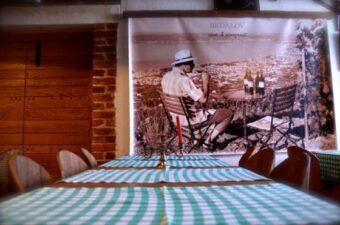
Bedalov Winery
Hedonism through centuries
Located in Kaštel Kambelovac, the third of seven historic cities of Kaštela, Jakša Bedalov is continuing the tradition of hospitality and winemaking that has been present in his family for over 400 years. Bedalov family prides itself on organically growing only indigenous, to the world unknown varietals, such as Ninčuša, Babica, Ljutun and Dobričić. The staples of the house are Zinfandel (or Crljenak as they call it in Kaštela) and Plavac Mali, the famous and powerful offspring of Zinfandel. Jakša is planning to reunite the whole family of grapes in one majestic cuvee where mother and father, Crljenak and Dobričić will be blended with their famed son Plavac Mail creating a reunion for the ages.
Other than making wine and liquors Jakša grows Mediterranean spices in his garden and uses them extensively in his cooking. He is known as one best chefs among winemakers and he is also a trained sommelier. Watch out for the incredibly special and unique Zinfandel risotto.
View for the tasting room terrace, at approx. 400 m altitude, is the most complete panoramic view of Kaštela, Split and the surrounding area, all the way to the islands, that you can get without getting into a helicopter and flying over the bay.
If you want to set up a visit to the winery, taste wine at the 400m high tasting room and learn more about the true origins of Zinfandel join us on our “The Birthplace of Zinfandel” tour or contact us for a separate winery visit. As mentioned, Jakša is an amazing chef, and can prepare a delicate tasting menu to accompany his wines, or guide you through a whole four course meal or original and fresh Croatian food paired with unique and interesting wine from his vineyards.

Putalj Winery
Investing in a passion
The story of Anton Kovač and Putalj winery is a story of passion. Only a few people in the world have a true love in something as simple as wine. Anton does. Upon selling a large chunk of land to a supermarket chain Anton decided, that rather than retiring, he will invest in something he adores. Fast forward a few years and Anton is sitting in a modern cellar, with a newly planted Zinfandel vineyard. Located in Kaštel Sućurac, the first of seven towns of Kaštela, Anton works his own vineyard at 400 m altitude by hand, and year after year produces better and better wines. Anton has also planted Plavac Mali (the widely popular Zinfandel offspring) and has started to experiment with a rose wine made from Zinfandel (dry, not connected to Franzia’s White Zinfandel “style” in any shape or form).
If you want to set up a tasting at the winery, go see the 400m high vineyard and learn more about the true origins of Zinfandel join us on our “The Birthplace of Zinfandel” tour or contact us for a separate winery visit. Anton is always glad to meet wine enthusiasts from around the world and will welcome you with a selection of his wines and incredible cheese, oil and bread.
ADD ADDITIONAL PICTURES, NEED FROM SRDJAN


